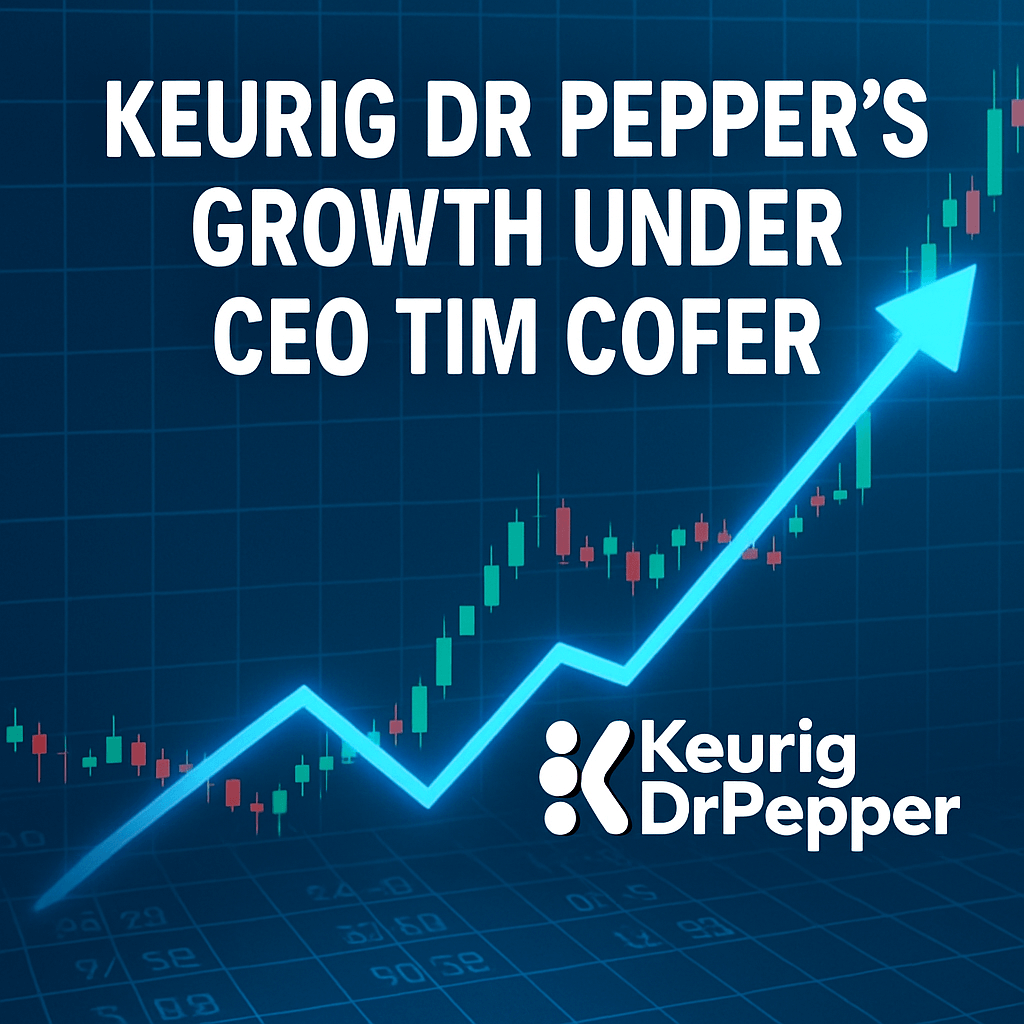Keurig Dr Pepper’s Growth Under CEO Tim Cofer

On a cloudy afternoon in late March, at the co-headquarters of Keurig Dr Pepper (KDP) in Burlington, Massachusetts, CEO Tim Cofer enthusiastically navigates a modern office space filled with an array of beverage showrooms. This location serves as a testament to KDP’s innovative approach toward beverage offerings, ranging from 16 flavors of Dr Pepper to an eclectic mix of energy drinks.
After arriving from KDP’s secondary headquarters in Frisco, Texas, Cofer is energized and committed to rebranding KDP as a formidable challenger in the beverage market dominated by giants Coca-Cola and PepsiCo. Since taking the helm as CEO in April 2022, having initially joined the company as COO in November 2021, Cofer is focused on embracing a culture of disruption, fostering a mindset of aggression while simultaneously leveraging KDP’s established market presence.
Transforming KDP’s Beverage Portfolio
Central to Cofer’s vision for KDP is not only expanding its beverage portfolio but also evolving its branding to capture the attention of younger consumers. KDP isn’t merely about maintaining its position but rather transforming itself on multiple fronts. His leadership is especially evident in the company’s recent acquisition of the energy drink brand Ghost for $1.65 billion, marking a pivotal point in KDP’s strategy to amplify its footprint in the high-margin energy drink sector.
Cofer’s strategy is bolstered by effective marketing that resonates with Gen Y and Gen Z consumers. The efforts have helped catapult Dr Pepper from a distant third place in the soft drink category to becoming the second-best-selling non-cola soft drink in North America, surpassing even Pepsi in the process. Such rapid changes reflect a broader trend in the beverage industry that underscores the importance of engaging younger demographics through digital marketing and unique product offerings.
An Experimental Fusion of Businesses
Formed through the 2018 merger of Dr Pepper Snapple and Keurig Green Mountain, KDP is distinctive in its combination of both hot and cold beverage franchises. This strategic merger positioned KDP as a unique player among beverage companies, and the firm now boasts over 125 brands as an owner, investor, or distributor within the massive non-alcoholic beverage market.
Data-driven insights played a crucial role during the pandemic, when then-CEO Bob Gamgort utilized information gleaned from smart coffee machines to predict changes in consumer behavior. By leveraging AI and real-time data, the company was able to respond proactively to surging demand, adjusting its production and distribution strategies ahead of many competitors.
Challenges in the Coffee Segment
However, KDP faces ongoing challenges in the coffee segment, as rising raw bean prices continue to increase the cost of K-Cup pods. This shift in the marketplace has shifted consumer preferences toward instant coffee and home brewing options. Industry analysts note that while KDP’s beverage offerings have thrived, its coffee sales have experienced a steep decline, presenting Cofer with the challenging task of revitalizing this aspect of the business.
Initiatives for Revitalizing Coffee Sales
To address these challenges, Cofer plans to invigorate the coffee segment with the introduction of K-Rounds—compact mounds of ground coffee without traditional packaging, designed for a new brewer called the Alta. This innovative model is intended to streamline production while maintaining quality. Cofer believes that there is tremendous potential to reposition their coffee offerings while capturing market share within a more health-conscious consumer demographic.
Building a Diverse Brand Portfolio and Market Strategy
Given the pressing need to enhance profitability, Cofer is focused on diversifying KDP’s brand portfolio through the introduction of premium offerings across energy, sports hydration, and ready-to-drink coffee sectors. These segments have shown higher profit margins and are more aligned with general market trends emphasizing health and wellness.
For instance, the recent release of Dr Pepper Creamy Coconut and Dr Pepper Blackberry has been well received, showcasing KDP’s adaptive marketing strategy—an approach marked by cultural relevance and innovations stemming from trending consumer behaviors.
The Road Ahead: Challenges and Opportunities
- Profitability Gaps: While KDP has experienced a wealth of new product introductions and growing brand recognition, it still lags in profitability compared to Coke and Pepsi, with a recent Cash Operating Return on Assets (COROA) estimated at 5.3% against Coke’s 11.5% and Pepsi’s 13.1%.
- Market Expansion: Cofer aims to close this profitability gap by increasing the proportion of higher-margin products sold, shifting consumer preferences to premium options that offer better returns on investment.
- Embracing Innovation: Cofer’s track record with fast-moving consumer goods positions him to adapt swiftly to changing markets. His experiences at Kraft and Mondelez have instilled the importance of leveraging consumer insights for product development and market positioning.
A Promising Perspective on Leadership
Outside the boardroom, Cofer’s engaging approach to leadership is exemplified in his web series Taste Test With Tim, where he invites KDP executives and partners to share their insights on new product launches in a lighthearted format. This initiative not only humanizes the brand but also integrates innovative marketing strategies to draw consumer interest.
Tim Cofer’s journey from brand management to corporate leadership showcases a commitment to innovation and consumer engagement. As he forges ahead toward a more competitive positioning for KDP, it’s evident that under his stewardship, the company is on the cusp of redefining its identity in the ever-evolving beverage landscape.
“We’re hungry, we like to disrupt; this is a challenger culture where we play offense, not defense.” – Tim Cofer, CEO of KDP
Source: fortune